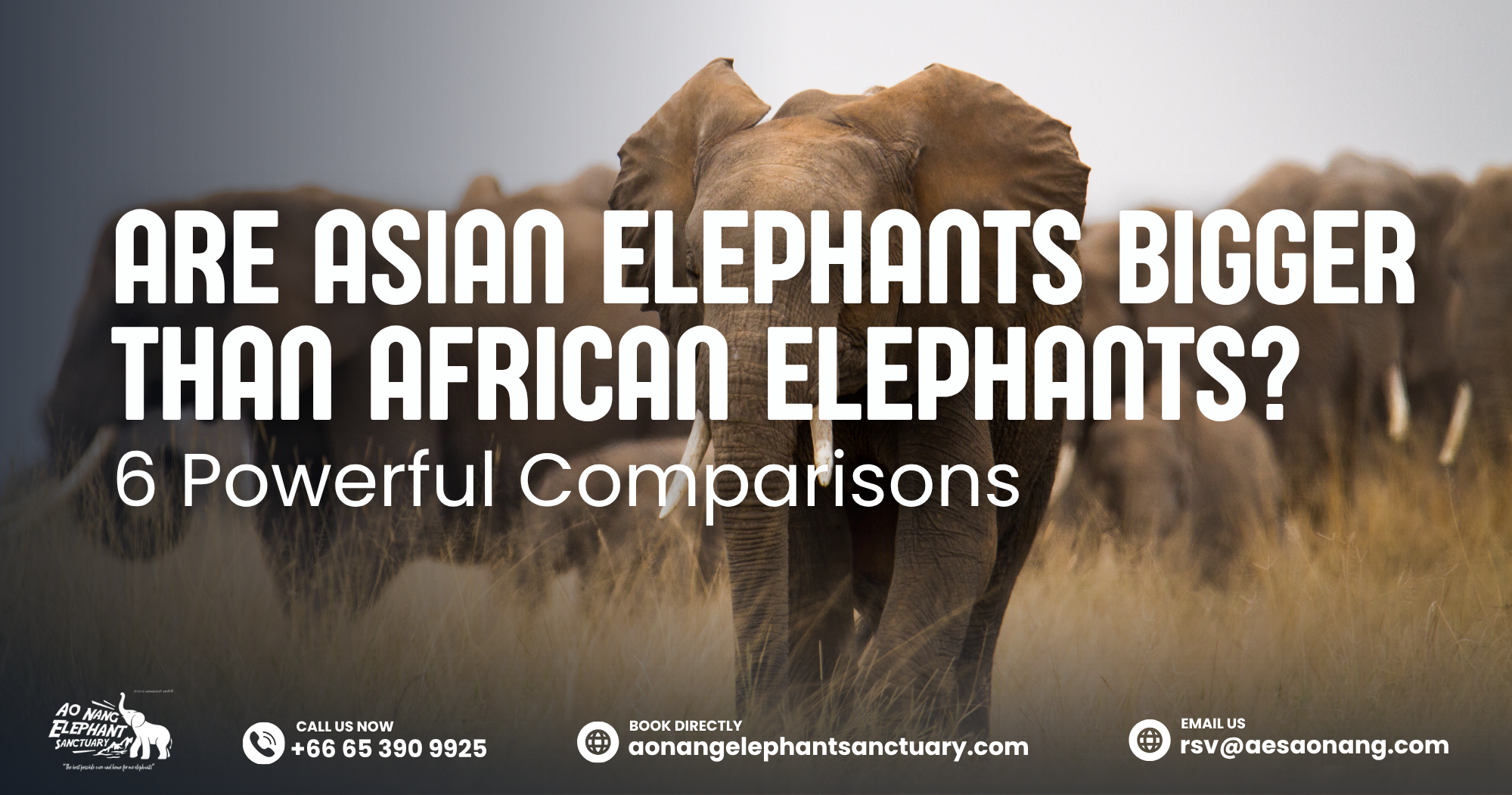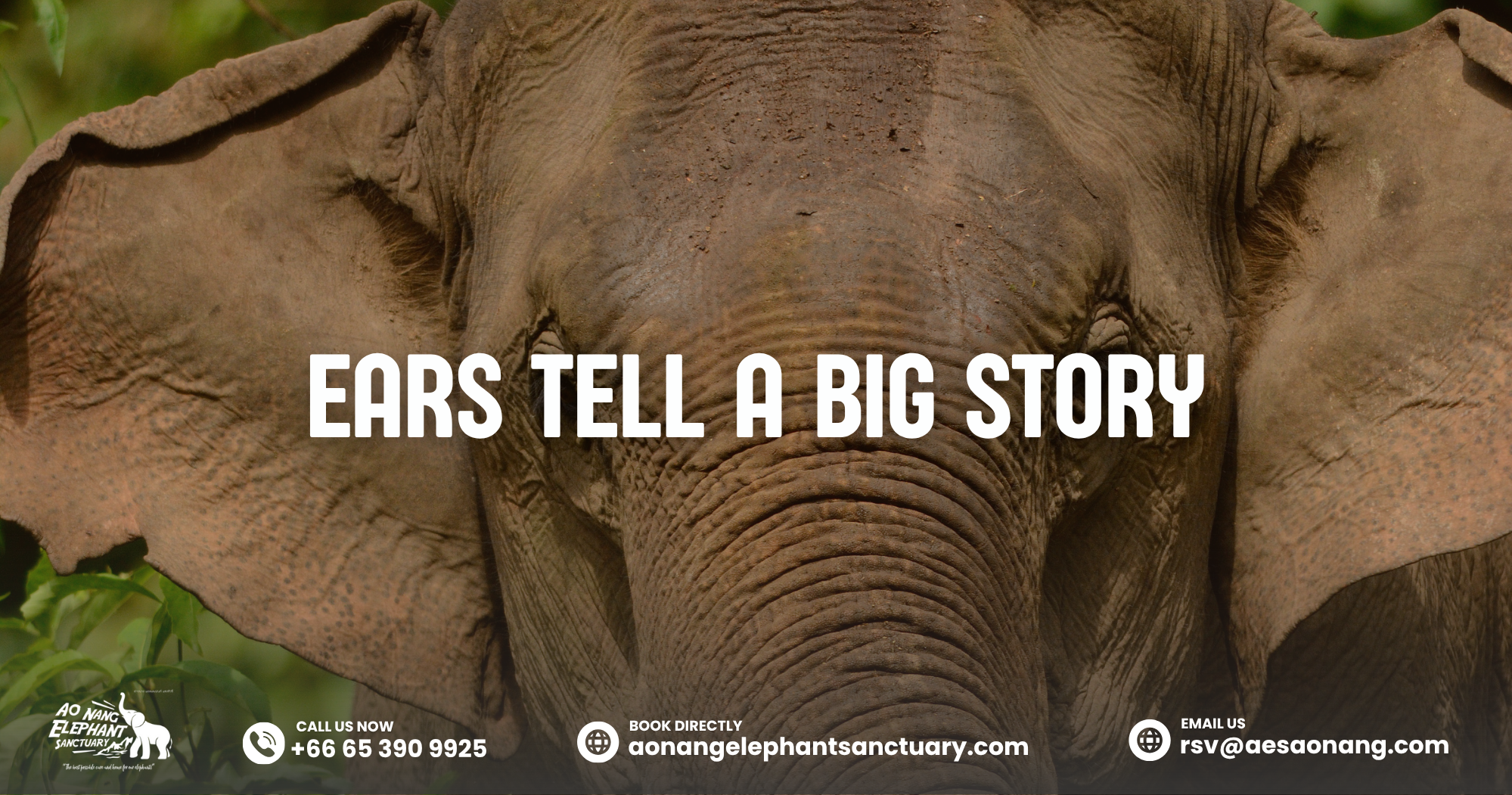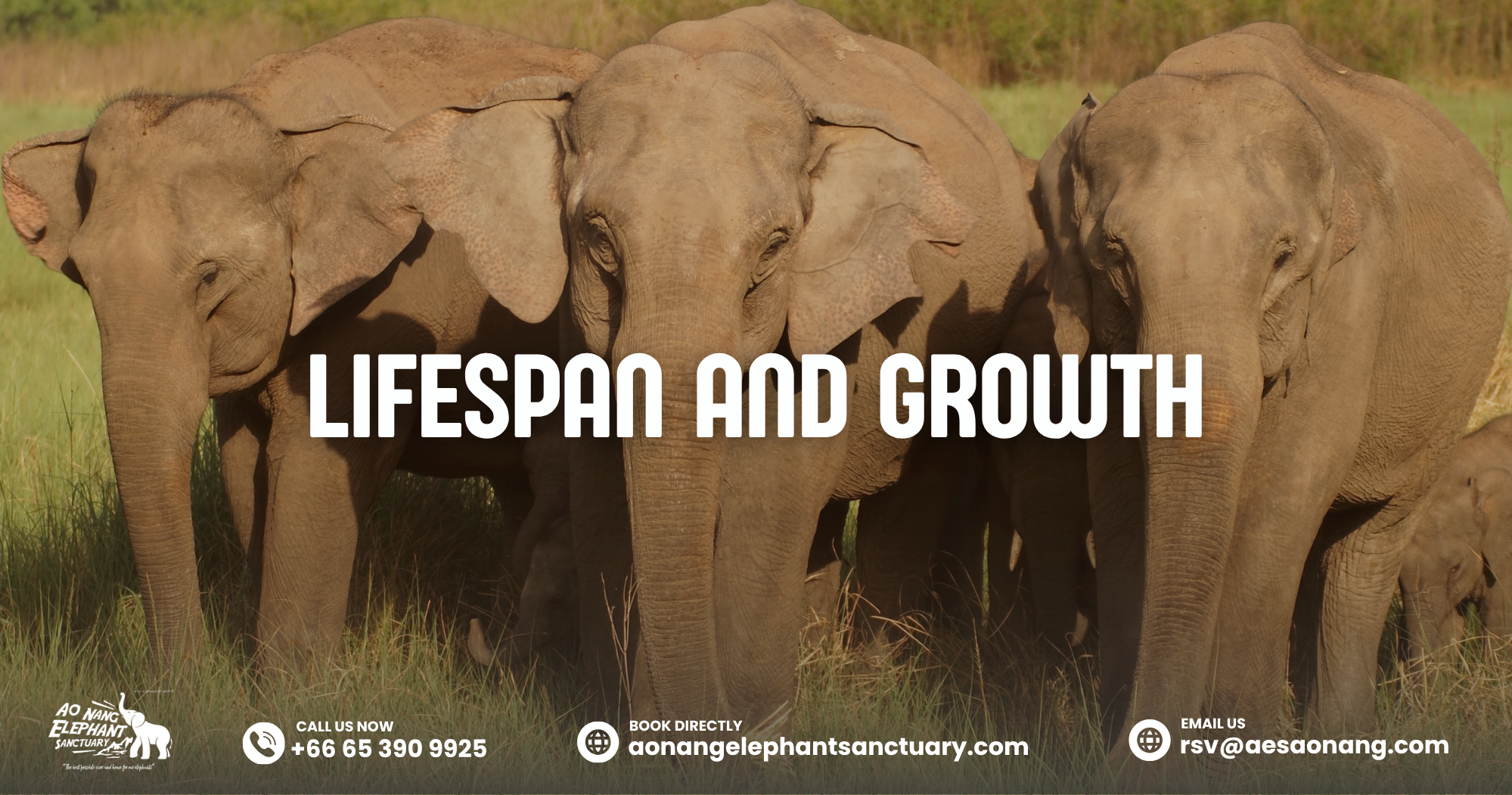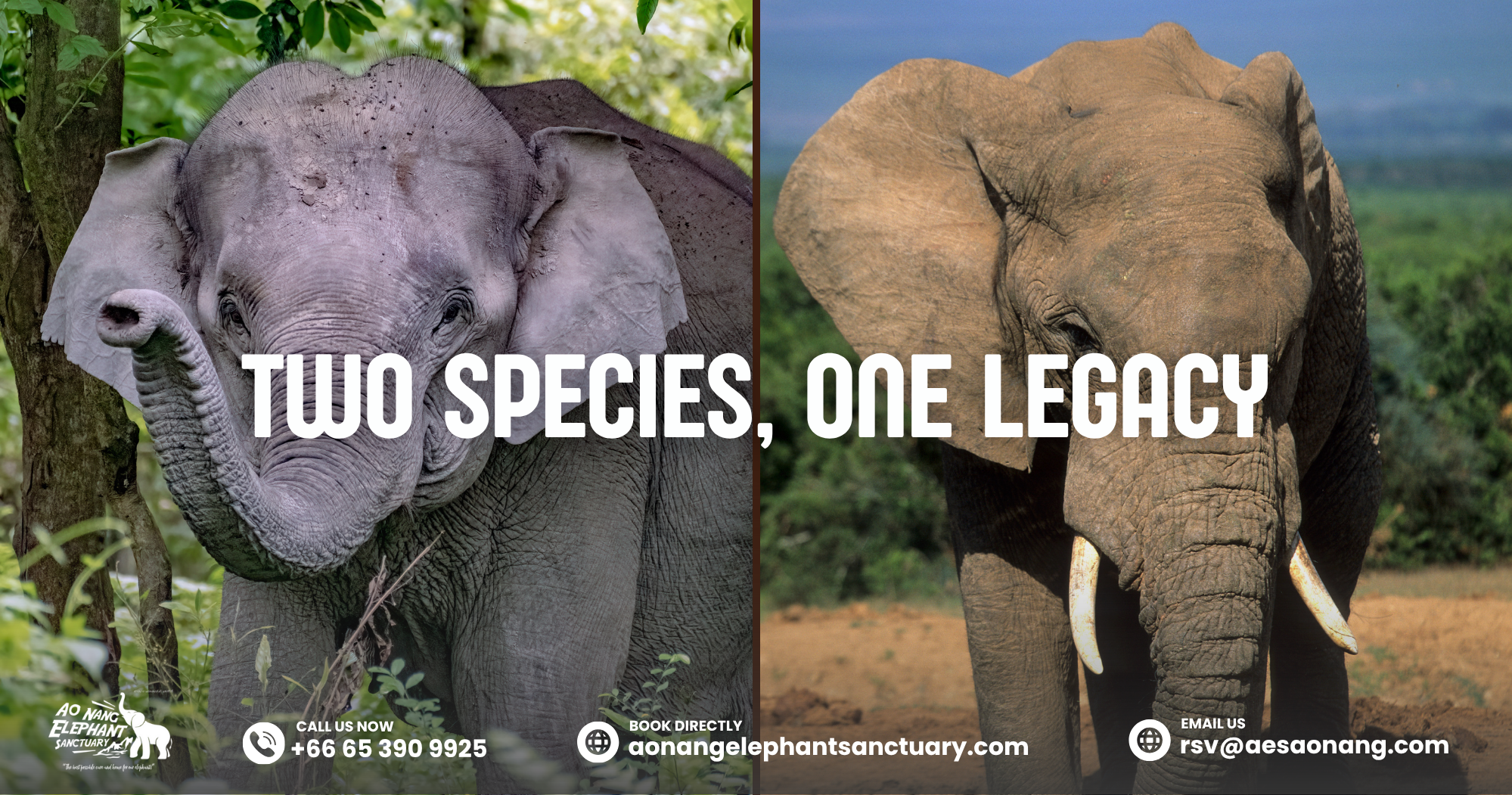Elephants are the largest animals on earth, and different kinds of elephants have different sizes. Are Asian elephants bigger than African elephants? That’s a common question, especially since the African elephant (Loxodonta africana) and the Asian elephant (Elephas maximus) are the two main species, which may seem the same at first sight, but they vary quite a lot in their size, look, and actions.
WWhat is the difference in size between an Asian elephant and an African elephant? Which one is bigger? The answer to this question is that there is no significant size difference between the two species. However, aside from just size, the two differ in other factors, such as behavior, social structure, diet, and habitat. From these differences, the two species show how they have adapted.
Let’s delve deeper into their life to see how they match up in every aspect.
Size Comparison: Are Asian Elephants Bigger Than African Elephants?
The point of comparison is size first, which is an absolute win for African elephants. They are huge. Male adults, or bulls, are capable of growing to a height of 3 to 4 meters at the shoulder, and the mass of the animals can be 6,000 kilograms (13,000 pounds). Females, being the opposite gender, still are not down to the level, as they can grow to approximately 8 feet in height and 3,000 kilograms in weight.
On the other hand, the size of an Asian elephant is not as large as that of an African elephant. Male elephants generally reach heights of 2.5 to 3 meters and weigh between 4.5 tonnes (9,910 pounds) and 5 tonnes (11,023 pounds). An average female is even less than that, with a height of 2 meters approximately.
Here’s a quick comparison table:
| Feature | African Elephant | Asian Elephant |
| Height | 10–13 feet | 8–10 feet |
| Weight | 4,000–6,000 kg | 3,000–5,000 kg |
| Ear Size | Large, fan-shaped | Smaller, rounded |
| Back Shape | Concave | Convex or level |
| Tusks | Both males and females | Mostly males only |
| Skin Texture | Rough, deeply wrinkled | Smoother with fewer wrinkles |
Ears Tell A Big Story
Most people who have seen the two elephants could easily point out the difference in the size of the biggest ears. The large ears of the African elephant are in the shape of a fan and cover almost the entire side of the body. The size of ears may be six feet from the tip to the bottom. An adult human could be roughly the length of one of the ears. These huge ears are not only the organs of hearing; they are the means of natural cooling.
African elephants can cool the blood flowing through thin superficial vessels in the ear by a process of rapid flapping of the ear, which causes the air to be in contact with large areas of the thin skin. In this way, the animals can beat the sizzling heat of the dry savannah region and remain in control of their temperatures.
In comparison to the former, Asian elephants have small and round ears. Since their habitat is of a humid and shady forested nature, they don’t need a large ear surface for the dissipation of heat.
A fun way to remember the difference:
- African elephant ears resemble the shape of the African continent.
- Asian elephant ears are smaller and more oval, similar to the shape of India.
Head And Back Shape Differences
You need to consider the shape of the head and back of an elephant to find out its species. Comparing the two species, the heads of African elephants are more rounded and fuller, with a single dome, and their backs are saddle-shaped (concave). On the other hand, Asian elephants possess a twin-domed head with an obvious indent in the middle, and their backs are either level or slightly convex.
These anatomical distinctions are due to different evolutionary adaptations. To support bigger tusks and trunks, African elephants developed broader skulls, while the ones of Asian elephants became smaller and more suitable for pushing through thick forests.
Social Life And Behavior
Both species are highly intelligent, social, and emotional; however, there is a small difference regarding their group dynamics.
The size of African elephant herds is generally larger, and they are under the command of a matriarch—the eldest and the most experienced female. Their units can consist of several dozen individuals, mostly in open grasslands.
Whereas Asian elephants usually comprise fewer members in a group and thus can be termed as a more tightly knit family, which typically consists of mothers, daughters, and calves. Naturally, forests limit the size of their gatherings.
Perhaps both species form strong emotional bonds in common. They grieve for their dead, remember relatives even after being separated for years, and use infrasound to communicate—a very low-frequency sound that is beyond human hearing.
Lifespan And Growth
As a matter of fact, elephants have very long lives and can reach the age of 60–70 years in the wild. African and Asian elephants are subjected to similar life stages—calf, juvenile, subadult, and adult—but their developmental speed varies.
In general, an African elephant is capable of getting mature a bit earlier than an Asian one and thus attains sexual maturity within the age range of 10 to 12 years, whereas the latter matures approximately between 12 and 15 years.
Why African Elephants Are Bigger
The differences in size between the African and the Asian elephants can be attributed to the respective evolutionary sources and environments of their habitats.
African elephants have developed their traits in the vast savannas and deserts, where a big body helps in water retention and in resisting the heat. Their diet contains up to 100 different types of grasses, roots, and shrubs, which are the main sources of their colossal size.
In contrast, the Asian elephants have come from thick jungles, where there is less space to move around. A smaller and more compact body enables them to pass through dense vegetation without wasting energy, and on the other hand, bamboo, leaves, and fruits satisfy their dietary needs.
Two Species, One Legacy
Are Asian elephants bigger than African elephants? The answer is, no. African elephants are the bigger ones, but each of them is equally amazing. Both of them are the lifelines of ecosystems, seed dispersers, and landscape developers, to mention only a few of their functions.
So, it doesn’t matter if it’s the giant African elephant from the savannas or the kind Asian elephant of the jungles; these fantastic creatures have to be given our respect, space, and protection. Besides their intelligence, empathy, and strong social bonds, they also serve as a reminder that the whole web of life is closely interconnected.
In case you happen to be in Thailand and are looking for an ethical way of getting a close view of the gentle giants, feel free to visit the Ao Nang Elephant Sanctuary in Krabi. We offer the best care and liberty to elephants to live their natural lives—no rides, no chains, just genuine interaction and learning.
Don’t let the chance to practice ethical tourism slip through your fingers and become an elephant welfare journey accomplice!
Reserve your spot now to get a chance to meet Asian elephants!
- Phone: +66 65 390 9925
- Email: [email protected]
- Book directly at aonangelephantsanctuary.com





